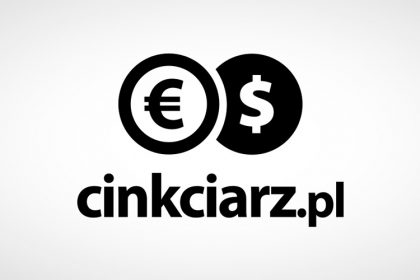A standout portfolio is crucial. It’s your opportunity to demonstrate your skills, creativity, and thought process to potential employers or clients. Crafting a portfolio that effectively showcases your work involves more than just displaying your best projects. It requires a strategic approach to presentation, storytelling, and usability.
Understanding Your Audience
The first step in creating an impactful UI/UX portfolio is understanding your audience. Are you targeting potential employers, freelance clients, or fellow designers? Each audience has different expectations and interests.
Employers
Employers are often looking for candidates who can solve problems and fit into their company culture. They want to see your process, from initial concept to final product. Highlighting your ability to work within a team, meet deadlines, and adapt to feedback is crucial.
Clients
Clients, on the other hand, are interested in how you can solve their specific problems. They want to see your versatility and how you’ve handled projects similar to theirs. Case studies showcasing your ability to deliver results can be particularly compelling.
Fellow Designers
If your portfolio is aimed at networking with other designers, it should highlight your unique style and approach. Sharing insights into your creative process, the tools you use, and the challenges you’ve overcome can make your portfolio more engaging to this audience.
Curate Your Best Work
Quality over quantity is a key principle in portfolio curation. It’s better to have a few outstanding projects than a large number of mediocre ones. Select projects that best represent your skills and align with the type of work you want to do.
Show a Range of Skills
While it’s important to highlight your strongest areas, showing a range of skills can demonstrate your versatility. Include projects that showcase different aspects of UI/UX design, such as user research, wireframing, prototyping, and visual design.
Focus on Impact
Choose projects where you can clearly demonstrate the impact of your work. Metrics and data that show improvements in user engagement, conversion rates, or other key performance indicators can make your portfolio more compelling.
Tell the Story Behind Each Project
A portfolio is not just a gallery of images; it’s a narrative of your design journey. For each project, provide context and detail your thought process.
Project Overview
Start with a brief overview of the project. Explain the problem you were trying to solve, the target audience, and the goals of the project.
Your Role
Clarify your role in the project. Were you the lead designer, or did you collaborate with others? This helps viewers understand your contributions and teamwork skills.
Process and Tools
Describe your design process and the tools you used. Whether it’s sketching, wireframing, prototyping, or user testing, detailing your process shows your methodical approach and proficiency with industry-standard tools.
Challenges and Solutions
Every project has its challenges. Highlighting these and explaining how you overcame them can demonstrate your problem-solving skills and resilience.
Results
Finally, present the results. Use visuals, data, and testimonials to show the impact of your work. If possible, include before-and-after comparisons to illustrate the improvements you achieved.
Use High-Quality Visuals
The visual presentation of your portfolio is crucial. High-quality images, clean layouts, and consistent styling can make a big difference.
Professional Photography
If you have physical prototypes or products, consider using professional photography to showcase them. High-resolution images with good lighting can make your work look more polished and professional.
Consistent Layouts
Use a consistent layout throughout your portfolio to create a cohesive look. This helps maintain a professional appearance and makes it easier for viewers to navigate your work.
Interactive Elements
Including interactive elements such as clickable prototypes or videos can make your portfolio more engaging. This allows viewers to experience your designs in a more dynamic way.
Make It User-Friendly
As a UI/UX designer, your portfolio itself should be an example of good design. Ensure it is easy to navigate, visually appealing, and accessible.
Clear Navigation
Use clear and intuitive navigation to help viewers find what they’re looking for quickly. A well-organized menu and breadcrumb trails can enhance the user experience.
Mobile-Friendly
Ensure your portfolio is mobile-friendly. With many people browsing on their phones, a responsive design is essential to reach a wider audience.
Accessibility
Consider accessibility features to make your portfolio usable for people with disabilities. This can include using alt text for images, ensuring sufficient color contrast, and making your content navigable via keyboard.
Personal Branding
Your portfolio is a reflection of your personal brand. Consistent branding can help you stand out and be memorable.
Logo and Color Scheme
Design a logo and choose a color scheme that reflects your personal style. Use these elements consistently throughout your portfolio to create a unified brand identity.
Personal Statement
Include a personal statement or bio that highlights your background, skills, and design philosophy. This gives viewers a sense of who you are as a designer and what you bring to the table.
Testimonials and References
Including testimonials or references from past employers, clients, or colleagues can add credibility to your portfolio. Positive feedback can reinforce your skills and professionalism.
Keep It Updated
A portfolio is not a static document; it should evolve with your career. Regularly update it with new projects and remove outdated work.
Continuous Improvement
As you gain more experience and refine your skills, update your portfolio to reflect your growth. This shows that you are actively engaged in your career and committed to improvement.
Regular Reviews
Schedule regular reviews of your portfolio to ensure it stays relevant and up-to-date. This can be an opportunity to reassess your work and make improvements.
Conclusion
Creating a standout UI/UX designer portfolio requires careful curation, storytelling, and attention to detail. By understanding your audience, showcasing your best work, and presenting it in a visually appealing and user-friendly manner, you can effectively demonstrate your skills and creativity. Remember, your portfolio is a living document that should grow with you, so keep it updated and continually strive for improvement. With these tips, you’ll be well on your way to creating a portfolio that not only showcases your work but also tells your unique design story.








